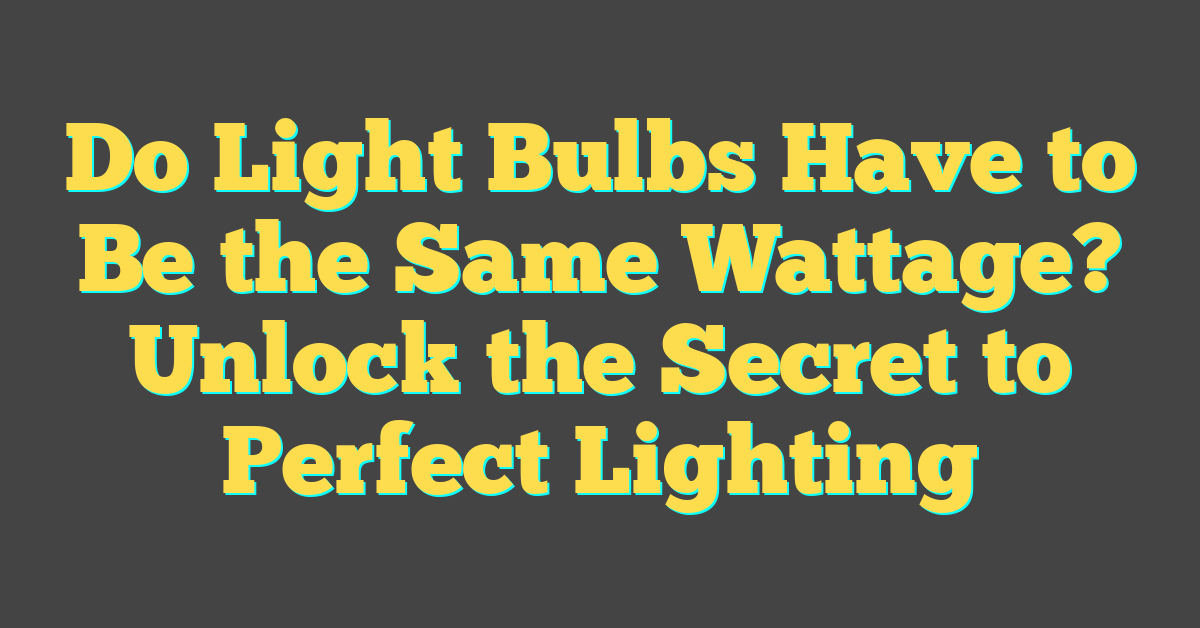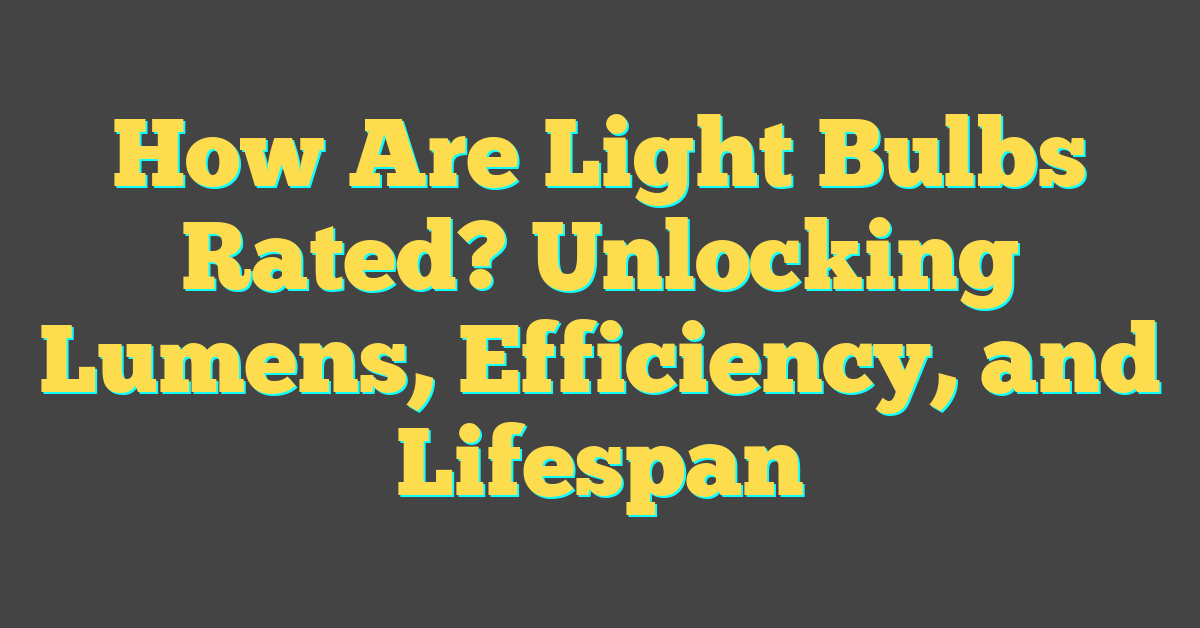Ever found yourself staring at an aisle of light bulbs, baffled by sizes and types? You’re not alone. Knowing your light bulb size is crucial for that perfect fit, but it’s often overlooked until you’re in the dark, literally.
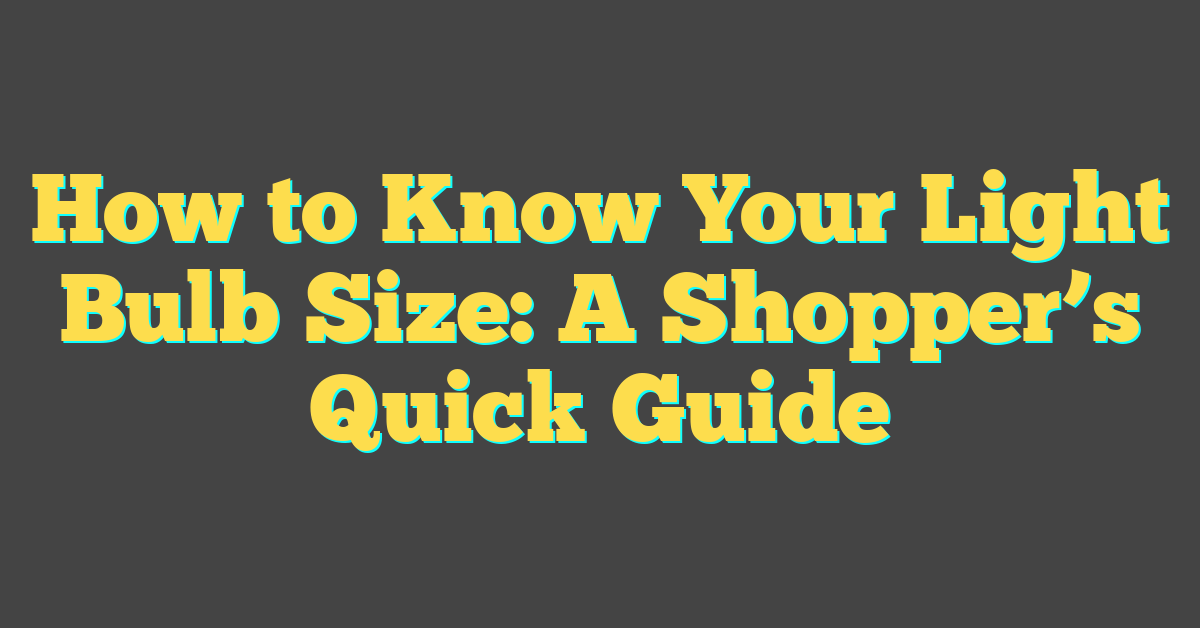
Why Knowing Your Light Bulb Size Is Important
As you delve into the world of home DIY projects, one truth becomes unmistakably clear: precision matters. Light bulbs are no exception. Understanding the size of light bulbs isn’t just about ensuring that they fit. It’s about optimizing your home’s lighting efficiency and aesthetics.
Firstly, a bulb that’s too large might not fit your fixture at all, leaving you with a purchase you can’t use. On the flip side, a bulb that’s too small may seem out of place or provide inadequate lighting for the space. It’s akin to finding the perfect place for a piece of art in your home.
Moreover, each fixture is designed to handle a certain amount of heat output. If the bulb is too big or too powerful, it could lead to overheating, which may damage the fixture or even pose a fire hazard. So, it’s crucial to match the bulb size to what your fixture is rated for.
In addition, there’s the matter of light distribution. A bulb that fits perfectly into your lamp or fixture will disperse light evenly, eliminating strange shadows or bright spots that can occur with ill-fitting bulbs.
Here’s a quick reference guide to common light bulb bases:
| Bulb Base | Common Name | Diameter |
|---|---|---|
| E12 | Candelabra | 12mm |
| E17 | Intermediate | 17mm |
| E26 | Standard | 26mm |
| E39 | Mogul | 39mm |
It’s not just about function, either. The right size bulb can impact the ambiance of a room. Soft lighting brands a welcoming, cozy space, while bright, clear bulbs can energize an office or kitchen.
Remember, different fixtures and lamps require distinct bulbs. While one might call for a slender, elongated tube-like bulb, another might need a compact and round one. A mismatch can compromise both your room’s style and the longevity of the light fixture.
And finally, accuracy in your light bulb size can bring about energy efficiency. The correct size means a bulb that’s well-suited to its purpose and a space that’s smartly lit without excess energy consumption.
Different Types of Light Bulbs
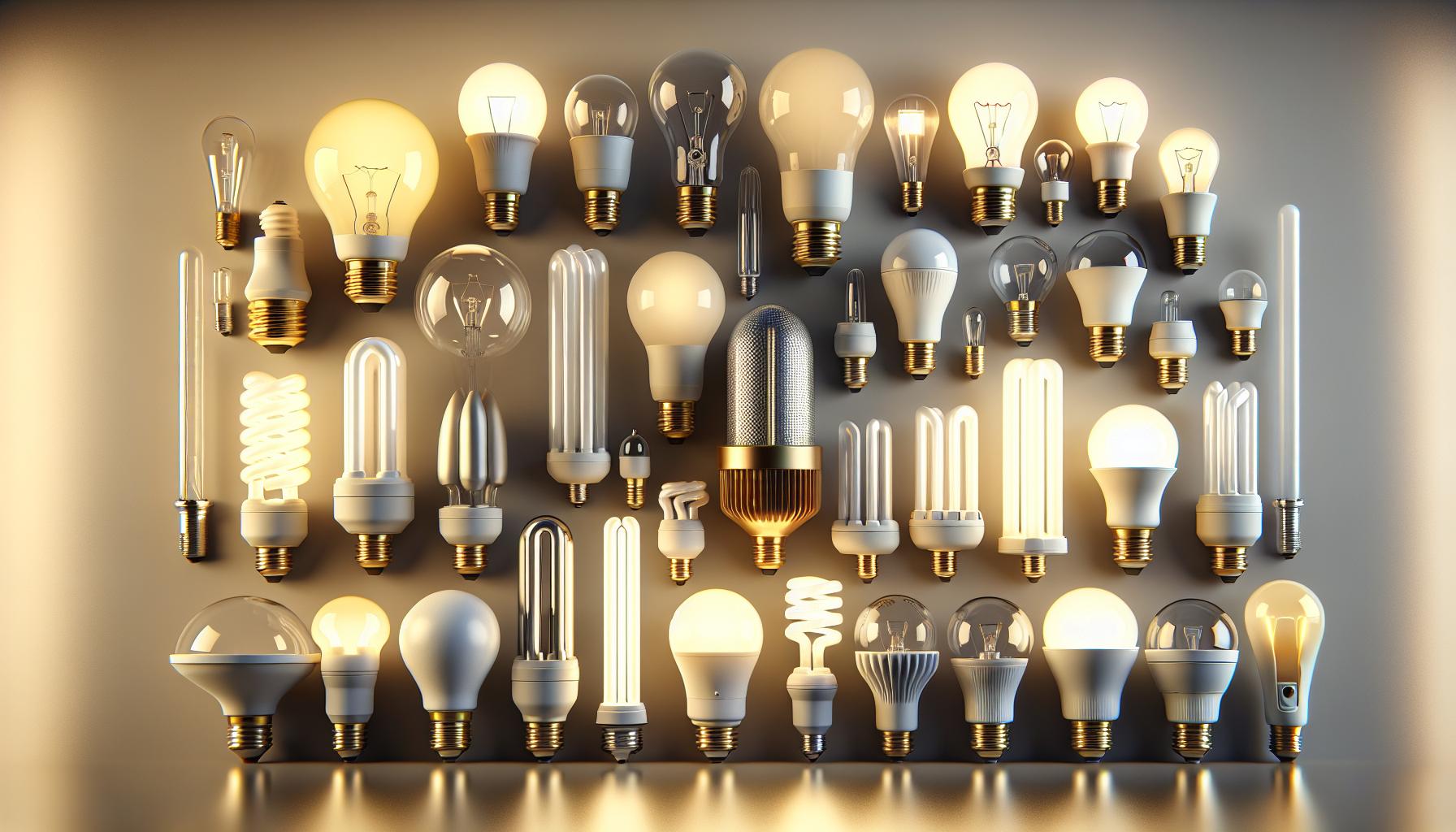
When you’re knee-deep in a DIY project, you’ll quickly learn that not all light bulbs are created equal. Understanding the various types of light bulbs is essential to ensuring that your lighting project is a dazzling success. Let’s shed some light on the main categories you’ll encounter.
Firstly, there’s the Incandescent Bulb, the traditional option that’s been around for ages. It’s your go-to for that warm, cozy glow but it’s not the most energy-efficient kid on the block.
Next up, Halogen Bulbs, similar to their incandescent cousins, but a tad more efficient and with a light that’s more on the white side. Perfect for spaces where you’re after a crisper ambiance.
Then we’ve got Compact Fluorescent Lamps (CFLs). These spiraled wonders use less power and last longer than incandescent bulbs. They take a moment to warm up, but once they do, your room is filled with steady light.
Moving on to Light Emitting Diodes, or LEDs, these are the future of lighting. They’re mighty efficient, have an impressively long lifespan, and come in a range of colors and temperatures. Whether you’re setting the scene for a movie night or need to concentrate on work, there’s an LED for every mood.
« What to Do If Light Bulb Exploded: Quick Cleanup and Safety Guide
What Light Bulbs Are Eco Friendly: Upgrade to Greener Light »
But let’s not forget Fluorescent Tubes. Usually found in offices or garages, these long cylinders pump out a lot of light and are pretty good on the efficiency scale. Not typically the first choice for cozy home lighting, but they’ve got their place.
Lastly, Smart Bulbs are the tech-savvy choice, allowing you to adjust brightness, color, and even schedule when they turn on or off, all from your smartphone.
From classic looks to savvy tech options, there’s a bulb for every socket, every lamp, every mood. Remember, the right size and type of bulb not only fits perfectly but also brings out the best in your space, blending function with flair.
Whether you’re lighting up a quaint reading nook or illuminating an entire backyard patio, the type of bulb you select plays a pivotal role. Not to mention, certain bulbs can make significant strides in cutting down your energy consumption, so keep an eye out for options that serve both your aesthetic and eco-friendly desires.
How to Determine Your Light Bulb Size

Knowing which light bulb fits your lamp or fixture is crucial to ensuring that you’re not left in the dark. You might be surprised by the variety of light bulb sizes and how that affects their utility in your home. Let’s dive into the specifics so you can make informed decisions the next time you find yourself in the lighting aisle.
First up, let’s talk about the base of the bulb. Most lamps and fixtures in American homes use an Edison screw base, which varies in size and is denoted by an “E” followed by a number – that number represents the diameter of the base in millimeters. For example, an E26 base – the standard size for most household light bulbs – has a 26mm diameter base.
If you’ve got a fixture at home, the simplest way to know what you need is to check the bulb that’s currently fitting well. If it’s gone missing, peek inside the fixture for any label or indication of the correct size. Some common base sizes you’ll encounter are:
- E12 – Candelabra, typical in decorative lighting
- E17 – Intermediate, often found in appliances
- E26 – Medium, the standard for most fixtures
- E39 – Mogul, used in larger, high-wattage lamps
When it comes to the bulb’s shape and size, manufacturers use codes like A19, where “A” represents the shape, and “19” signifies the diameter of the bulb at its widest point in eighths of an inch. Therefore, an A19 has a diameter of 2.375 inches (19/8 inches). The shapes can vary widely – from the traditional pear-shaped A-series to the decorative globe-shaped G-series.
For those recessed lighting setups or track lights, you’ll often deal with reflector bulbs. These have a designation such as BR20, where “BR” signifies “bulging reflector” and the number relates to the size of the bulb’s diameter.
Here’s a handy guide to some popular bulb shapes and their corresponding codes:
- A19 – Standard most common household bulb
- G25 – Globe-shaped, often used around vanities
- BR30 – Bulged reflector, typical in recessed lighting
- PAR38 – Parabolic aluminized reflector, ideal for outdoor lighting
Understanding Light Bulb Labels
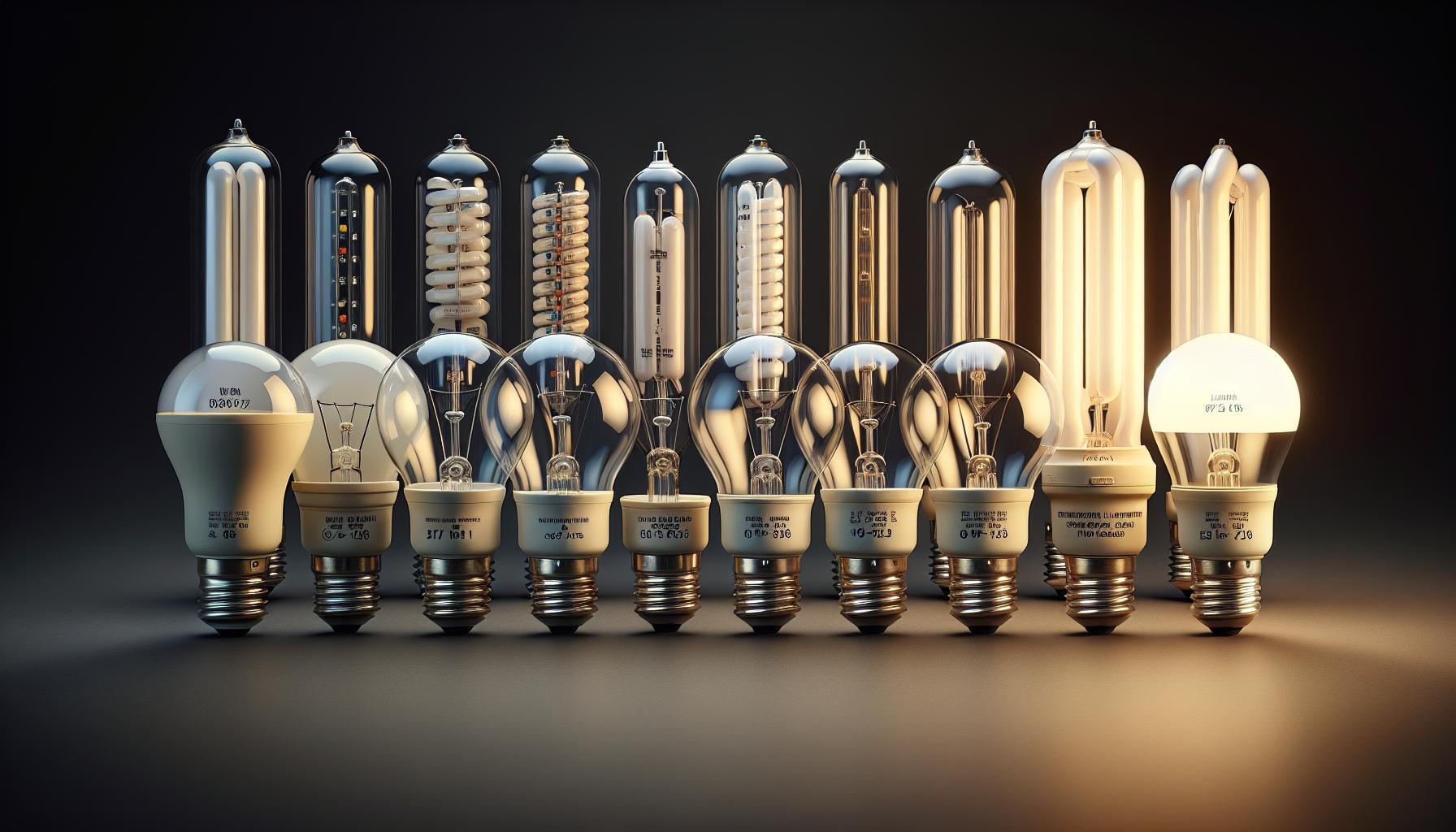
When you’re scanning the lighting aisle, every light bulb package seems to tell a story. The labels are your roadmap to making the right choice, and decoding them is simpler than you might think. Think of it like your favorite burger joint menu – you’ve got the size, the extras, and of course, the nutritional facts. Only with bulbs, you’re looking at watts, lumens, and life expectancy.
Let’s start with wattage. This number doesn’t indicate how much light you’ll get; it tells you how much energy the bulb uses. Higher watts mean more electricity consumption. In the past, you’d grab a 60-watt bulb and call it a day, but now with the advent of LED technology, lumens are your real go-to for brightness. Lumens are to light what calories are to that burger – it’s all about the quantity. More lumens, more light.
Next, you’ll want to eyeball the color temperature. Measured in Kelvins, this number will tell you whether your room is going to have that cozy, warm glow (2700K – 3000K) or that crisp, invigorating daylight feel (3500K – 5000K).
Here’s a quick glance at common numbers you’ll find on bulb labels:
| Lumens | Watt Equivalent | Color Temperature (Kelvins) | Lifespan (Hours) |
|---|---|---|---|
| 800 | 60W | 2700K | 10,000 |
| 1600 | 100W | 3000K | 15,000 |
| 2600 | 150W | 5000K | 25,000 |
Don’t overlook the Energy Star rating either. This badge of honor means your bulb is not just brighter but also better for Mother Earth and your wallet in the long run.
Take a look at the package’s backside where you’ll typically find the life expectancy listed. Keep in mind that those hours are based on typical use, averaging about 3 hours per day. If you’re someone who forgets to flip off the switch, you might see those numbers dwindle.
Remember, understanding these labels is the secret sauce to enhancing your home’s lighting.
Tips for Buying the Right Light Bulb Size
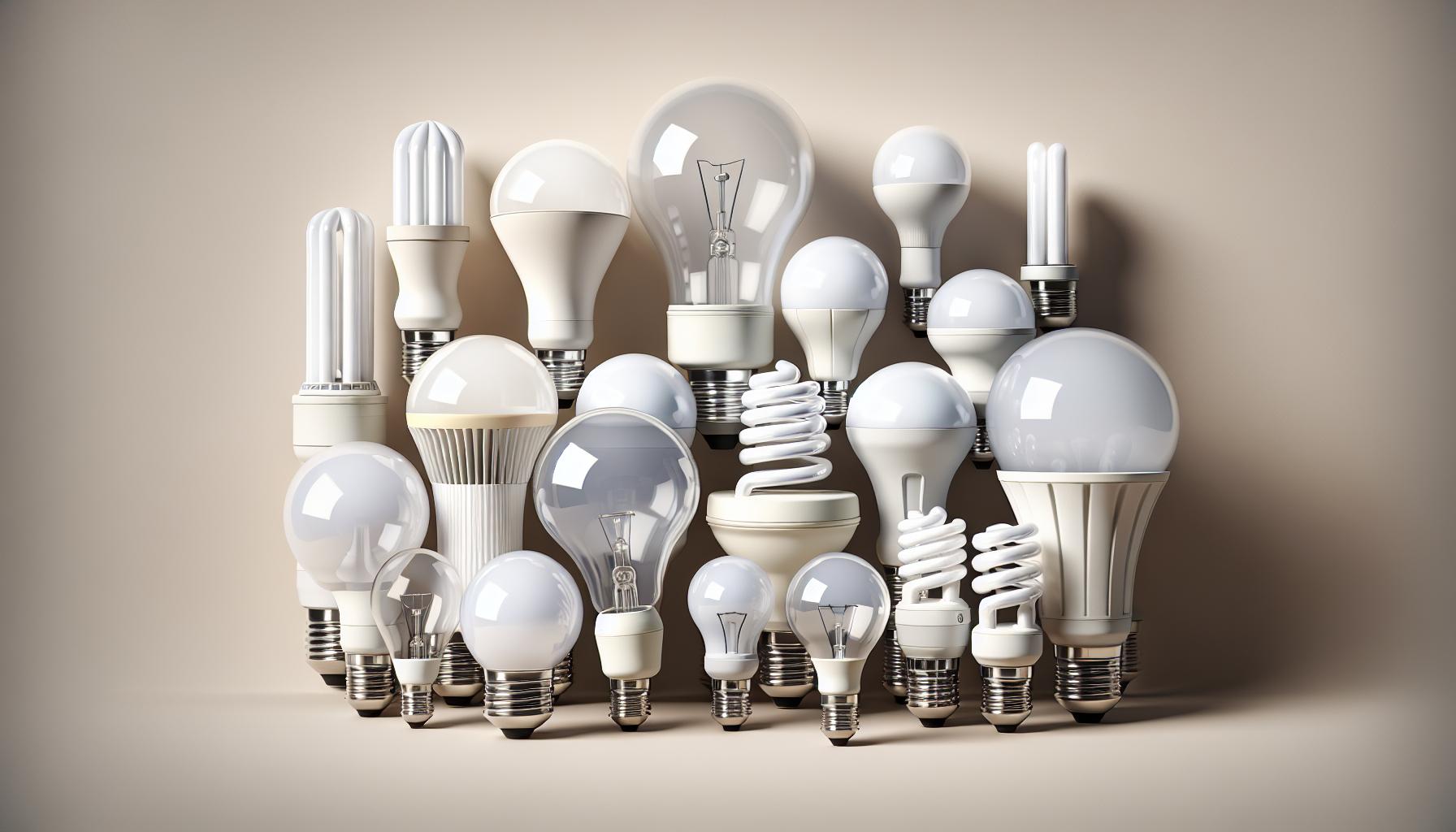
Before you dive into your next home lighting project, you’ll want to make sure you’re equipped with the right information to pick the perfect light bulb. Light bulb shopping can be more complex than you might think, but with these handy tips, you’ll be able to navigate your options like a pro.
First things first, take a look at your fixture and note the base type it requires. Is it the common Edison screw base? If so, remember that “E” followed by a number will let you know the diameter you’re after. Don’t get caught off-guard by confusing nomenclature – jot this down before you head to the store.
Next, consider the bulb’s shape. Are you looking for something like an A19 or a BR30? Understanding these codes is crucial since each shape has its unique fit and lighting effect. Don’t hesitate to bring the old bulb with you for reference, or if that’s not possible, a quick picture with your phone can be a lifesaver.
Understand Your Light’s Purpose
When browsing the aisles, think about the room you’re lighting. What atmosphere are you aiming for? Soft, warm light might be perfect for cozy living spaces while brighter, cooler bulbs could be just what you need for task lighting in your home office.
Keep an Eye on Energy Efficiency
- Wattage: Lower wattage means lower energy consumption.
- Lumens: This tells you how bright the bulb is. More lumens, more light.
- Color Temperature: Measured in Kelvins, this affects the warmth or coolness of the light.
| Energy Aspect | What It Means | Why It Matters |
|---|---|---|
| Wattage | Power usage | Energy savings |
| Lumens | Brightness | Desired light level |
| Color Temperature | Light color | Mood setting |
Look for the Energy Star label to ensure you’re getting a bulb that’s not only the right size and style but also energy-efficient. It’ll help your wallet and the planet in the long run.
Double-Check Before Leaving the Store
Finally, before you make your purchase, double-check the return policy. Even with all the right information, there’s still a chance you could grab a bulb that doesn’t quite fit your needs. Know whether you can exchange it hassle-free.
Conclusion
Armed with the knowledge of base types, bulb shapes, and the specific needs of your space, you’re all set to make an informed decision. Remember, it’s not just about the fit—it’s about finding the light bulb that meets your functional needs and energy goals. And if you’re ever in doubt after your purchase, that return policy is your safety net. So go ahead, light up your world with confidence!
Frequently Asked Questions
What should I consider before buying a light bulb?
Consider the base type and shape of your fixture, the purpose of the light, energy efficiency, wattage, lumens, and color temperature.
How do I know the right size of light bulb for my fixture?
Match the base type and shape of the light bulb with your current fixture’s requirements.
Why is understanding the purpose of the light important in choosing a bulb?
Understanding the purpose helps you select the appropriate brightness and color temperature for your needs.
What are lumens and how do they affect my light bulb choice?
Lumens measure the brightness of the bulb. The higher the lumens, the brighter the light.
Why should I pay attention to the color temperature of a light bulb?
Color temperature affects the mood and functionality of a space; warm colors create a cozy atmosphere, while cool colors are better for concentration.
Is wattage still an important factor when choosing a light bulb?
Yes, wattage indicates energy consumption and can be correlated with the brightness you need.
How crucial is energy efficiency when selecting a light bulb?
Energy-efficient bulbs, such as LEDs, can save money on electricity bills and are better for the environment.
What is a good practice before purchasing a light bulb?
Always check the store’s return policy in case the bulb doesn’t meet your expectations or fit your fixture.

